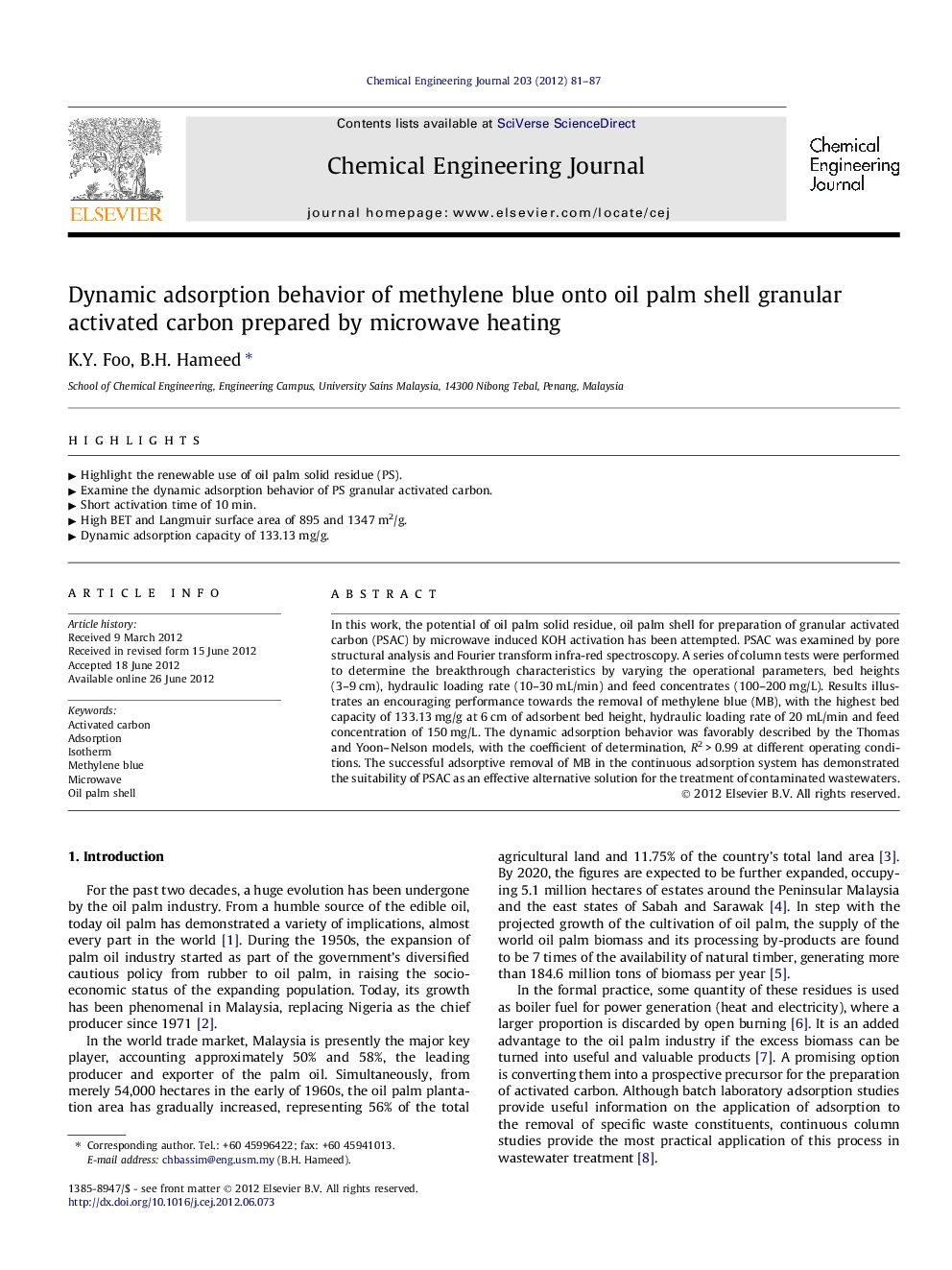| کد مقاله | کد نشریه | سال انتشار | مقاله انگلیسی | نسخه تمام متن |
|---|---|---|---|---|
| 149274 | 456430 | 2012 | 7 صفحه PDF | دانلود رایگان |

In this work, the potential of oil palm solid residue, oil palm shell for preparation of granular activated carbon (PSAC) by microwave induced KOH activation has been attempted. PSAC was examined by pore structural analysis and Fourier transform infra-red spectroscopy. A series of column tests were performed to determine the breakthrough characteristics by varying the operational parameters, bed heights (3–9 cm), hydraulic loading rate (10–30 mL/min) and feed concentrates (100–200 mg/L). Results illustrates an encouraging performance towards the removal of methylene blue (MB), with the highest bed capacity of 133.13 mg/g at 6 cm of adsorbent bed height, hydraulic loading rate of 20 mL/min and feed concentration of 150 mg/L. The dynamic adsorption behavior was favorably described by the Thomas and Yoon–Nelson models, with the coefficient of determination, R2 > 0.99 at different operating conditions. The successful adsorptive removal of MB in the continuous adsorption system has demonstrated the suitability of PSAC as an effective alternative solution for the treatment of contaminated wastewaters.
► Highlight the renewable use of oil palm solid residue (PS).
► Examine the dynamic adsorption behavior of PS granular activated carbon.
► Short activation time of 10 min.
► High BET and Langmuir surface area of 895 and 1347 m2/g.
► Dynamic adsorption capacity of 133.13 mg/g.
Journal: Chemical Engineering Journal - Volume 203, 1 September 2012, Pages 81–87